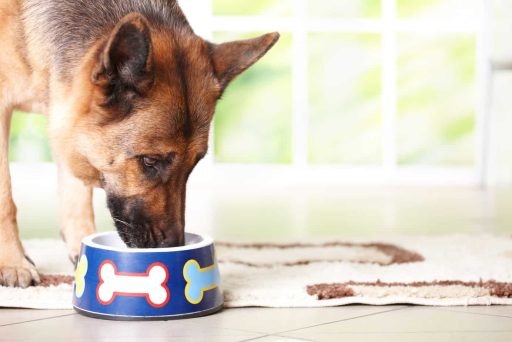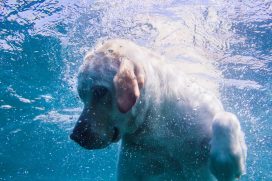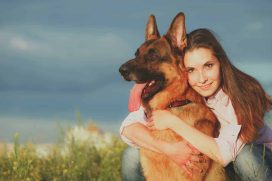It can be very worrying if your dog decides he doesn’t want to eat for a few days. If your dog has stopped eating, it’s important that you figure out why and get help from a vet if necessary
How long can a dog go without eating? Generally, a healthy dog can go anywhere from 4 days to a few weeks without eating.
It all depends on the dog’s health, environment, what he last ate and lifestyle. Water is a huge part of it too. A dog can go a maximum of 3 days without water, depending on activity and temperature.
There are several reasons a dog may not eat: they may be sick, stressed, depressed, picky, or you may choose to fast them. Let’s take a closer look at each.
How long can a healthy dog go without eating?
In extreme circumstances, most healthy adult dogs can last a few weeks without eating, or eating very little.
In general, a dog should eat at least once a day, and up to four times a day if your dog is still a puppy.
Some vets will tell you that you should be feeding your dog twice a day, but this is not always necessary.
It all depends on the breed of dog, his age, the amount of exercise he gets and the type of food that you are feeding him.
For example, if you are feeding your dog a raw diet, then it’s usually more convenient (for you) to feed him once a day. If its a dry food, it’s much easier to throw some kibble in the bowl twice a day, and leave it there until he eats it.
Raw food needs to be eaten fairly soon after it is prepared, and you need to take care that the preparation area and bowls etc are cleaned and sanitised when it’s all done.
As dogs get older their metabolism slow down and they don’t burn as much energy. Some older dogs can go a couple of days between eating and still be perfectly content and healthy.
Talk to your vet if you are worried about how much or how little your dog is eating. It may just be a behavioral issue or it may be something more serious that needs attention.
6 Reasons why your dog won’t eat
Most dogs love their food, and even though some might be picky about the type of food that they eat, there’s usually a good reason why a dog won’t eat at all.
If your dog has stopped eating, then you should get him to the vet as soon as possible. Unfortunately, if your dog has not eaten in more than 4 to 5 days, there could be something wrong that needs further investigation.
Here are a few of the most common reasons why a dog will stop eating.
1. Not eating can be a sign of illness
Most people will start to stress when their dog doesn’t eat, as it is often a sign that they are sick.
If your dog has a pre-existing illness and is not eating, he may not do as well without food as a healthy dog. This is because his body is already under stress and may not be as able to survive or get better without vital nutrients and vitamins.
If your dog’s only symptom is not eating, it’s usually safe to wait 24-48 hours before you take your dog to the vet.
If your dog is clearly in pain, is vomiting, has diarrhoea or is having trouble eliminating or not drinking water, then take him to the vet right away.
Here are some signs and symptoms to look for that require an immediate vet visit:
- Lethargy
- Arching of the lower back
- Difficulty moving
- Difficulty breathing
- Difficulty eliminating
- Vomiting or diarrhoea
- Stretching in a “down dog” or “play bow” position
- Not drinking water
- Pawing at or rubbing the face
- Sensitivity to having the face touched
- Being overly clingy or seeking solitude more than is normal
When in doubt call your vet, describe the symptoms, and see what they say.
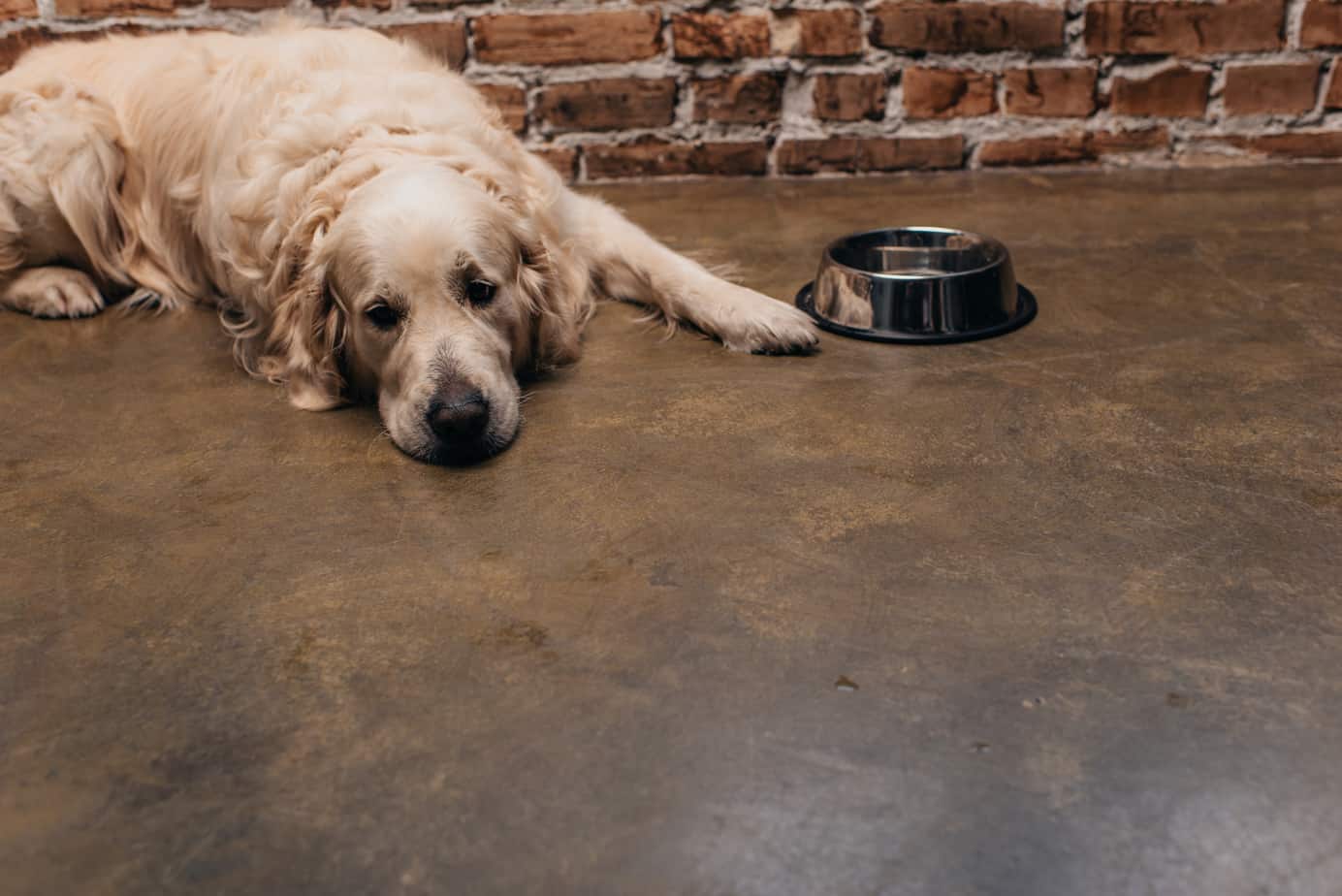
If the only symptom is your dog not eating you can do one of two things:
- Allow him to continue his fast until he chooses to eat or
- Try to encourage his appetite.
Allowing your dog to do this fast my prove helpful to his health in the long run. But be attentive and get to the vet if he continues to not eat for more than 48 hours.
Offering bone broth could prove helpful to stimulate his appetite. While the dog may not want to eat they may accept this warm broth.
Bone broth is high in gelatin, minerals, and glycine. These can help your dog feel better and get better. The Gelatin is full of amino acids, the building blocks of life.
If your dog is fueled with plenty of amino acids they will be able to build up the immune system and fight off any invaders.
Minerals are essential for good health and helping the immune system fight off invaders. Glycine can help to regulate the digestive system.
Plus, bone broth is super tasty. Warm it up just a little (not too hot) and most dogs will go crazy for it!
2. Stress and depression can cause a dog to stop eating
I used to puppy-sit my neighbor’s dog when they would go on vacation. He wouldn’t eat at all unless I hand fed him as he was stressed and depressed because they were gone.
Dogs may seem happy-go-lucky, but they can get stressed too. It can be helpful to know a few calming signals. These are your dog’s way of communicating that they are stressed in a situation. Removing the dog from a situation that causes them to display calming signals can be a good way to reduce overall stress.
If you are stressed this could also be affecting your dog. Our dogs read us well and often reflect our own feelings and emotions. If your dog is stressed because you are stressed, this may cause them to not eat too.
If you find that you are often stressed and think you may be stressing your dog then it is a good idea to find ways to reduce your stress. Perhaps doing some yoga or meditation or removing yourself from stressful relationships or jobs will help not only your stress level but your dog’s stress level.
3. Some dogs are Picky Eaters
Another reason a dog may not eat is that they don’t like their food. That was the case with my dog when I fed her kibble. I have since switched to a raw diet and her willingness to eat has improved a lot.
So, if your dog is a picky eater, try a different food or flavor of food.
4. Your dog is not getting enough exercise
Depending on the breed, some dogs can be more interested in running around and playing with a toy than eating.
My border collie Millie is a fussy eater. She is also obsessed with her squeaky toys, and will usually choose playing with one of these over her dinner. Especially if I have been out all day and she hasn’t had much exercise.
I’ve learnt over the years, that if she’s not interested in eating, then it’s much less frustrating (for both of us) if I play with her for a while or take her for a walk.
Most ‘working’ breeds are like this. They need a certain amount of mental stimulation to burn off some mental energy before they are interested in eating.
5. Your dog is not getting enough attention
If you leave your dog alone for hours on end he may not be interested in eating when you get home.
Sometimes this is because he is too excited to eat or it can be caused by stress.
The obvious way to deal with this is to not leave him alone regularly for too long. Or make sure to bring him for a long walk or play with him before you go out.
If you have to leave your dog alone regularly, maybe ask a friend or neighbor to drop in to your house during the day to spend some time with him and maybe feed him.
Most of the time a dog will take a long nap after he eats, and this can help relax him and reduce stress when you are gone.
6. Therapeutic Fasting For Health
Now we have another interesting option, fasting your dog for his health.
You may have noticed that there is a growing trend of fasting among people. Fasting has many scientifically proven health benefits in humans including:
- Promoting blood sugar control
- Reducing insulin resistance
- Fight inflammation
- Can improve blood pressure, triglycerides, and cholesterol
- Can promote brain function
- Boosts the metabolism
- Increases growth hormone production, essential for longevity
- May help prevent cancer
- Can increase autophagy
So, what about dogs, will they reap all of these benefits from fasting too?
There are a growing number of holistic vets and dog owners that believe that introducing fasting to your dogs diet has many benefits.
If you think about it for a minute, wolves, a dog’s main ancestor, don’t get 1-3 square meals a day. A wolf can go days without eating and still have the energy to bring down their prey so they can have a meal.
Many dog owners are now feeding their dogs a raw meat diet. They say that a raw-fed dog with a diet high in healthy meats and fats and low in carbs will do much better fasting then a dog fed kibble or wet food that is fed a few times a day.
This is because the raw fed dog’s body is used to burning fat as fuel and can use any stored fat as fuel. The body of a kibble fed dog is used to burning sugar and carbs as fuel and will have a harder time converting to a fat burning metabolism.
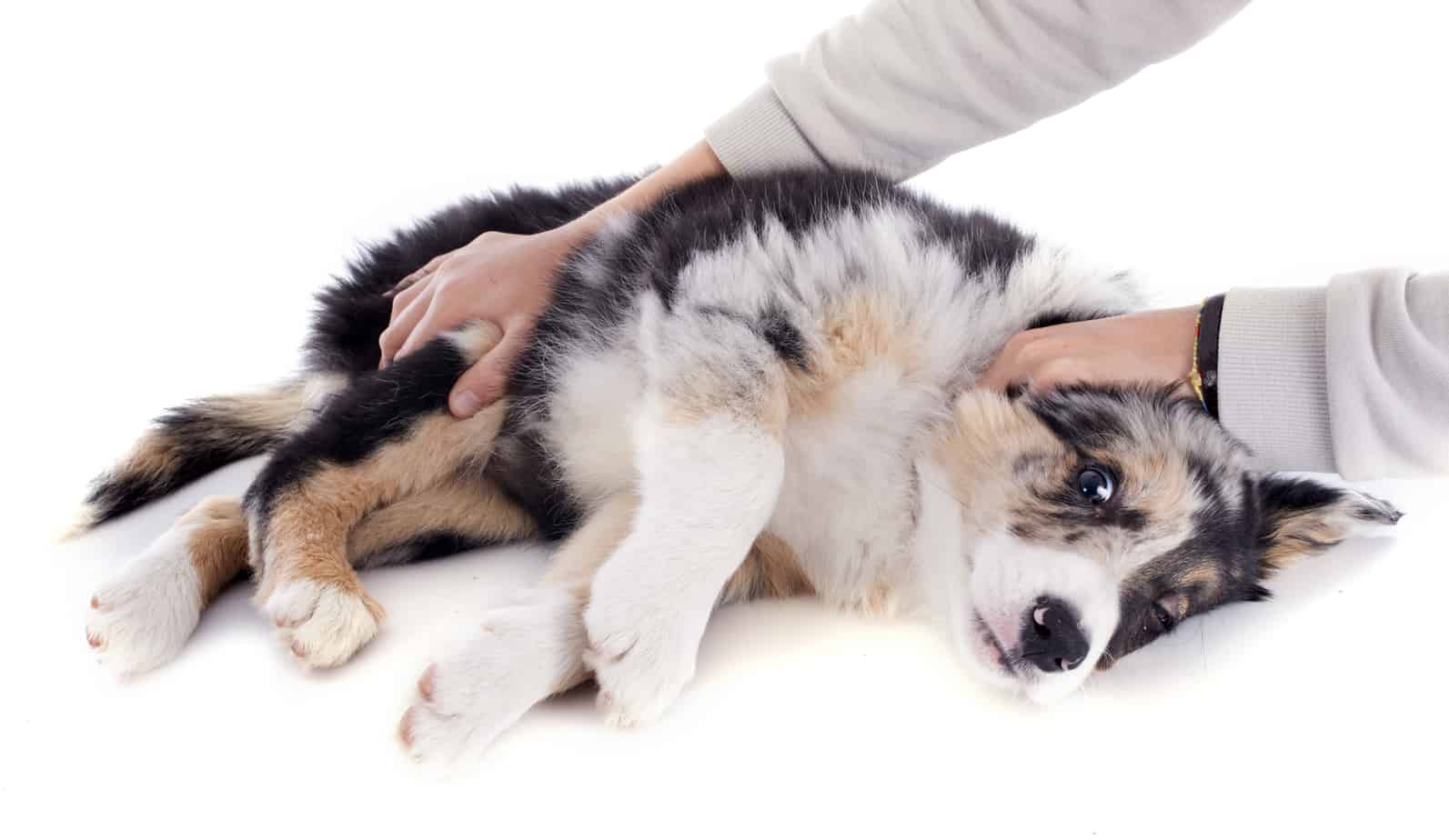

Why do you want your dog to use stored fat as fuel? Burning stored body fat can help your dog to lose weight and to build muscle.
Digesting food takes a lot of energy. If your dog is fasting, however, that energy can be used for other things like healing, increasing immune function, creating a healthy balance of hormones, detoxifying, and getting rid of damaged and dying cells.
Fasting can also give the digestive tract time to rest and heal. This can be especially helpful if your dog suffers from leaky gut. Fasting can also help with several other digestive issues, giving the body energy to heal and time to rest.
Just like with humans you can do different types of fasting for your dog. Some people like to give their dogs bone broth during a fast. Others give their dogs recreational bones with little meat on them.
Still, other owners say that a fast is only a fast if only water is offered. Experiment and see which your dog does best with. Be sure to always offer freshwater.
Also, fasting should only be done with adult dogs, not puppies. Puppies need a more constant energy source to grow and thrive. There may be some medical conditions as well that my make fasting inappropriate for your dog. Be sure to ask your vet if fasting would is right for your dog.
How To get a dog to eat (when he doesn’t want to)
Like the old saying goes, you can lead a horse to water….
If your dog is not sick, but just doesn’t want to eat what you have put in front of him, then there are a few ways that you can spark his appetite.
1. Try changing his food every few days. If your dog is on a dry or canned food diet, try buying a few different varieties. Rather than buying a big bag of food once a month, try buying a few smaller bags that you can switch between.
2. Add some leftovers from your food to his bowl with his dinner. Just like with kids, some dogs just want what you’re having, not because it’s nicer, they want it just because it’s yours!
Don’t feed your dog until after you have eaten, and save a small amount to mix in with his dinner. Not only will he find it more interesting than his food that he eats every night, he will have probably been sitting watching you eat and this will have made him hungry.
3. Try feeding your dog smaller meals every few hours. Some dogs get overwhelmed when they see one big bowl of food and lose interest after a few bites. If your dog is like this, then try feeding him 3 to 4 times a day if possible.
Some dogs are also more likely to eat straight after their walk or run in the park. Experiment with different times to find what suits your dog best.
4. Some dogs do better eating just once a day. This is the way I feed my two dogs. One is a picky eater that will only eat once a day, whilst the other one is prone to putting on weight and would eat constantly if I let him.
By feeding them once a day, the picky eater is more motivated to eat as she is more hungry, and our other dog, Alfie, is less likely to overeat and has plenty of time between meals to burn some extra calories.
Summary – How Long can dogs go without eating?
Dogs can go without eating for 4 days to a couple of weeks, depending on their health.
There are several reasons a dog may choose not to eat. Perhaps they are stressed, you are stressed, the dog dislikes his food, the dog is sick, or has a mouth injury. All of these can be reasons a dog will choose not to eat. Depending on symptoms you may choose to wait 24-48 hours before you go to the vet.
Sources
https://www.huffpost.com/entry/dogs-stress-humans-study_l_5cf972dee4b0b08cf7eb281d
http://en.turid-rugaas.no/calming-signals—the-art-of-survival.html

